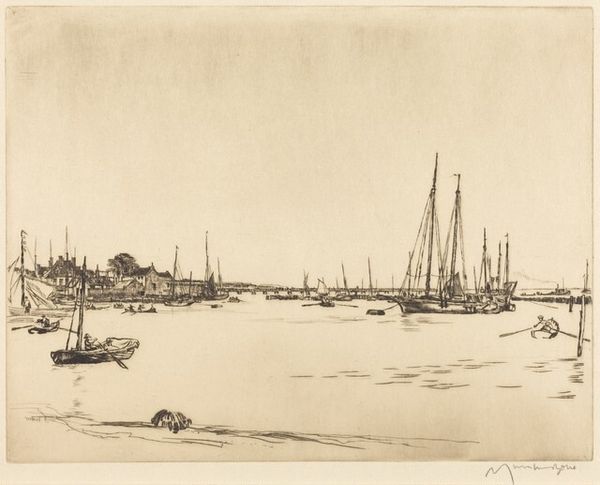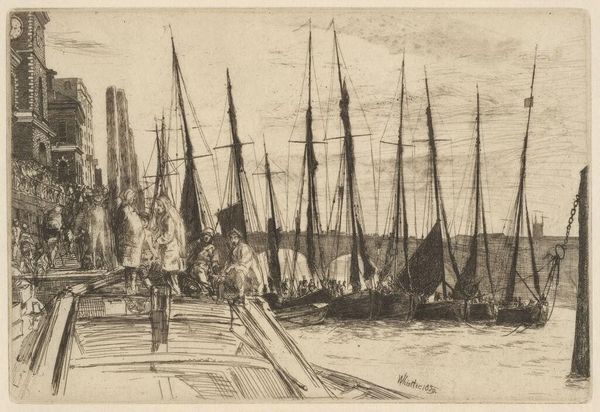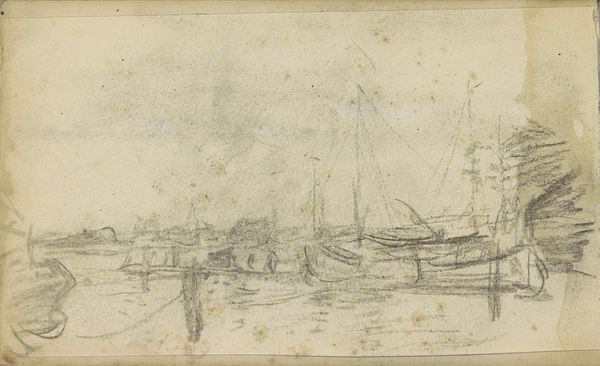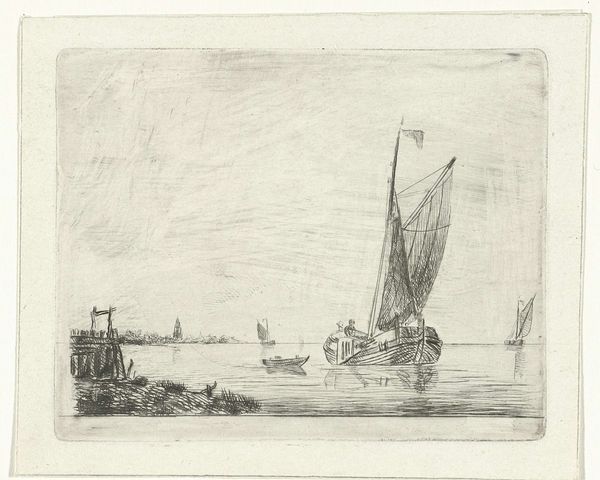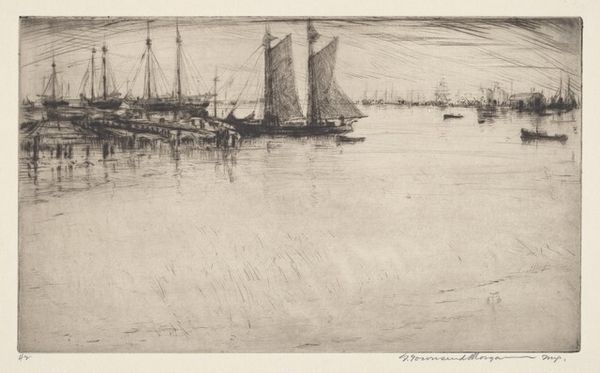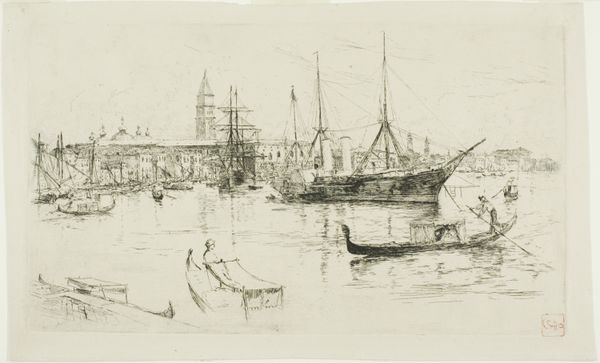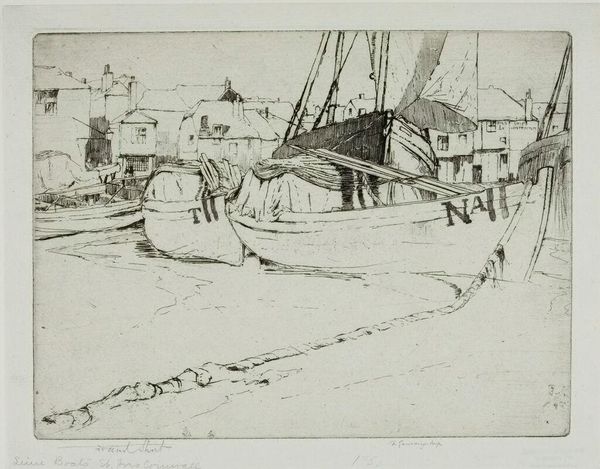
drawing, print, etching
#
drawing
# print
#
impressionism
#
etching
#
landscape
#
cityscape
#
realism
Copyright: Public Domain: Artvee
James Abbott McNeill Whistler created this print of Amsterdam using etching techniques. Note the ships, their masts reaching skyward like a forest of aspirations. The ship, throughout history, has been laden with symbolism. Think of the "Ship of Fools," a medieval allegory depicting a vessel overrun by the foolish, sailing aimlessly. Here, in Whistler’s Amsterdam, the ships take on a different hue. They symbolize not folly, but trade, exploration, and the indomitable spirit of human endeavor. Consider the masts; vertical lines are often interpreted as symbols of aspiration, a reaching toward the divine, towards something greater than ourselves. In ancient Egyptian art, obelisks served a similar purpose. The scene evokes a sense of bustling activity, the subconscious hum of a port city filled with dreams, desires, and the eternal quest for what lies beyond the horizon. The symbol of the ship is a cultural touchstone, continuously adapted. Its emotional and psychological resonance persists, engaging us on a deep, subconscious level.
Comments
No comments
Be the first to comment and join the conversation on the ultimate creative platform.

